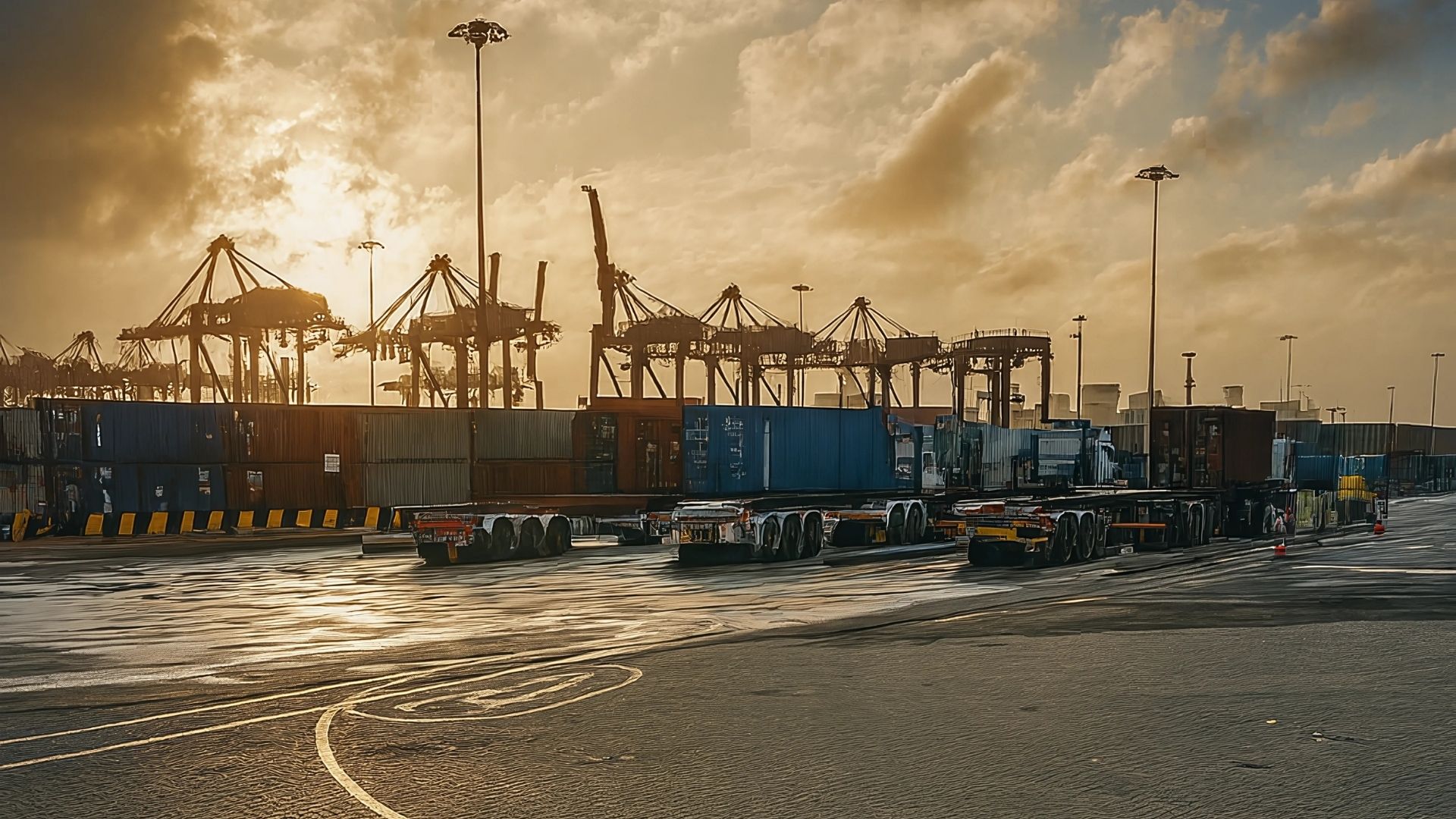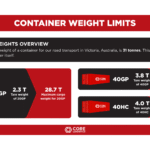Demurrage and Detention Explained: What They Mean and How to Avoid Extra Charges

If you move containers in or out of Australia, understanding demurrage, detention, and storage is essential. These charges add up quickly, cut into margins, and create avoidable stress.
At Core Logistics, we help clients avoid extra charges through planning, clear communication, and tight transport coordination. This guide explains the terms in plain English, shows day-by-day timelines, and gives practical ways to stay in the clear.
Quick definitions
Demurrage: Charged while the full container is still at the port terminal and not collected within free time.
Detention: Charged outside the port when a container, full or empty, is not returned within free time.
Storage: Charged by terminals, yards, or warehouses for occupying space beyond free days. This is separate from shipping line demurrage and detention.
Important: With many shipping lines, the detention free-time clock starts from the container’s first availability at the terminal, even though detention charges only apply when the container is outside the port. If you pick up late, you may have little or no detention free time left, which can trigger detention shortly after gate-out. Always check the specific tariff from your shipping line.
What Is Demurrage?
Demurrage is a fee charged by the shipping line when a full import container remains at the port terminal beyond the allotted free time.
When Does Demurrage Apply?
- Demurrage begins after the container is discharged and available at the terminal.
- Demurrage applies only while the container remains at the terminal.
- Demurrage accrues daily from the first day after free time ends until the container leaves the terminal.
7-day demurrage free time: day-by-day example
Scenario A: Not collected within 7 free days
Day 1: Container discharged and available at the terminal → free time starts.
Days 1–7: Free time. No demurrage.
Day 8 onward: Demurrage starts and accrues daily until gate-out full.
Scenario B: Collected within free time
Day 1: Container discharged and available at the terminal → free time starts.
Day 4: Container is collected at the terminal and gated-out.
Result: No demurrage charged.
What Is Detention?
Detention is a fee charged by the shipping line when a container outside the port is not returned to the nominated depot within free time. This applies whether the container is full or empty while in your possession.
When Does Detention Apply?
In Melbourne, Australia, some shipping lines count detention free time from Day 1 of terminal discharge, not from Day 1 of terminal availability. On the other hand, some shipping lines count from Day 1 of terminal availability allocated for each vessel.
It is important to check what your respective shipping lines count detention free time from.
Detention is only charged while the container is outside the port.
If you pick up after your detention free time has already expired, detention can start immediately on gate-out.
7-day detention free time: day-by-day examples
Scenario C: You pick up early, return late
Day 1: Available at terminal → detention free time starts counting.
Day 3: Gate-out full to site.
Day 8 onward: Detention applies until the empty is returned.
Day 9: Empty dehired.
Result: 2 days detention (Days 1–7: Free time window for detention, Days 8–9: Detention applies).
Scenario E: Quick turn within free time
Day 1: Available.
Day 2: Gate-out full.
Day 6: Empty dehired.
Result: No detention (returned within Days 1–7).
Common Causes of Demurrage & Detention Charges
- Transport delays – missed time slots or slow delivery schedules
- Warehouse bottlenecks – slow unloading or limited dock access
- Weather and disruptions – storms, strikes, or customs inspections
- Poor coordination – lack of visibility between shippers, consignees, and transporters
How to Avoid Demurrage and Detention Fees





Related Costs to Watch: Storage and Waiting Time
It’s important to distinguish demurrage and detention from other similar charges:
What are Storage Fees
Storage fees are charges for occupying space beyond free days at a port terminal, container yard, or warehouse. These are paid to the facility that is storing the container or cargo. These are separate from shipping line demurrage and detention.
Storage timing examples
Terminal storage:
Day 1: Available at terminal.
Free storage varies by terminal. After free storage ends, terminal storage fees apply for each day the box remains at the terminal.
These fees can be billed by the terminal and are separate from demurrage that the shipping line bills.
Yard or warehouse storage:
- If a full container or loose cargo sits beyond free days at a depot or warehouse, that facility may bill daily storage.
Waiting Time Fees
Charged by transport companies when truck drivers are delayed beyond the allowed free waiting period at ports, depots, or customer sites.
How to Reduce Waiting Time Charges




While some waiting time delays are unavoidable, efficient planning can reduce their frequency and cost.
Fuel Surcharges, Tolls & Compliance: Other Key Cost Drivers
In addition to detention and demurrage, container transport costs are also influenced by:
Fuel Surcharges
Fuel prices are volatile. Work with providers who offer transparent fuel policies and optimise delivery routes to cut fuel usage.
Toll Fees
Strategic route planning helps reduce toll costs—especially with major infrastructure projects like Melbourne’s West Gate Tunnel increasing charges.
Weight Compliance Costs
Avoid NHVR fines by using weighbridges, balancing container loads, and staying within road-legal weight limits.
Expert Tip: Take a Holistic View of Container Costs
Managing detention and demurrage is just part of the equation. To fully optimise your container transport, focus on:
Tracking all costs — not just headline rates
Streamlining turnaround time — from port to site and back
Partnering with a reliable logistics provider — one that understands compliance, regulations, and operational risks
Why Choose Core Logistics?
At Core Logistics, we help Melbourne-based businesses move containers smarter—not just faster.
- Transparent pricing
- Timely pickups and returns
- Route and slot optimisation
- Regulatory compliance
- Real-time tracking and milestone updates
We specialise in helping clients avoid demurrage, detention, and other hidden costs through expert planning and execution.
Get a Competitive Quote for Container Transport and Storage
Looking for a trusted Melbourne transport company to handle your container transport and storage needs? Core Logistics provides tailored solutions designed to reduce costs while ensuring efficient and reliable transport services.
Contact us today to discuss your requirements.
Call us at +61 3 9315 3204 or fill out our contact form to get started.

